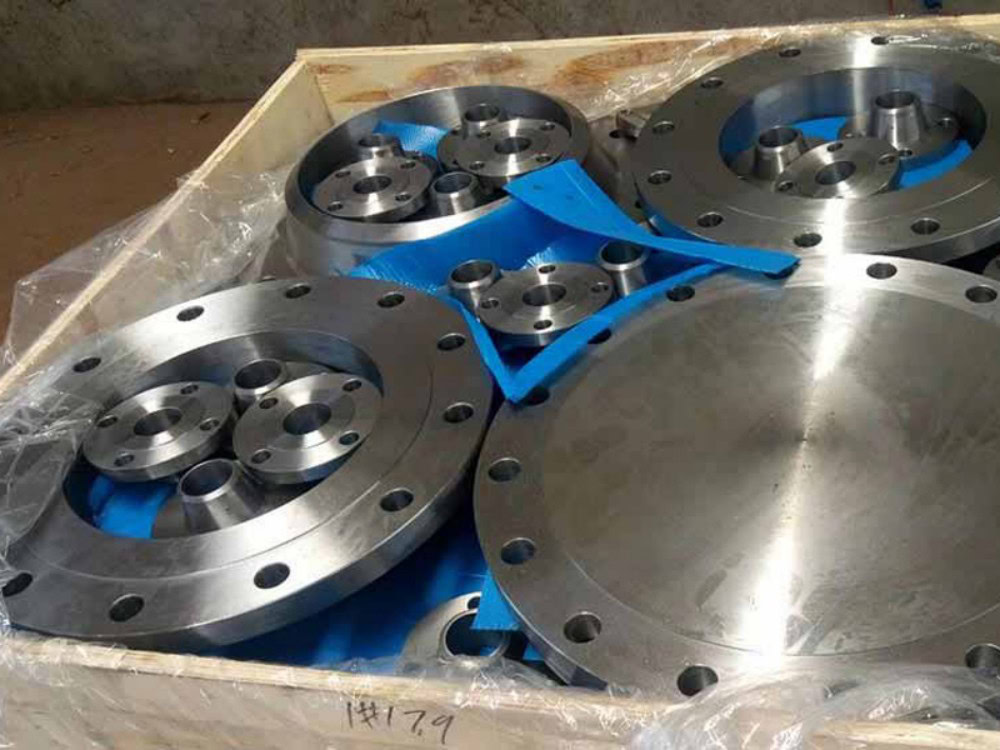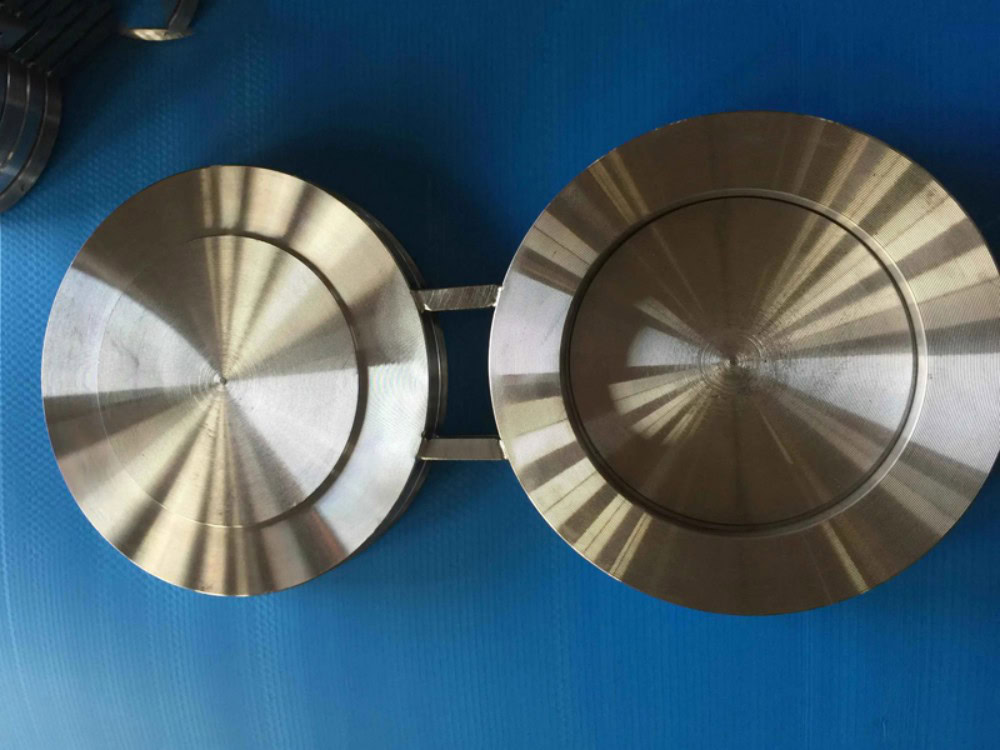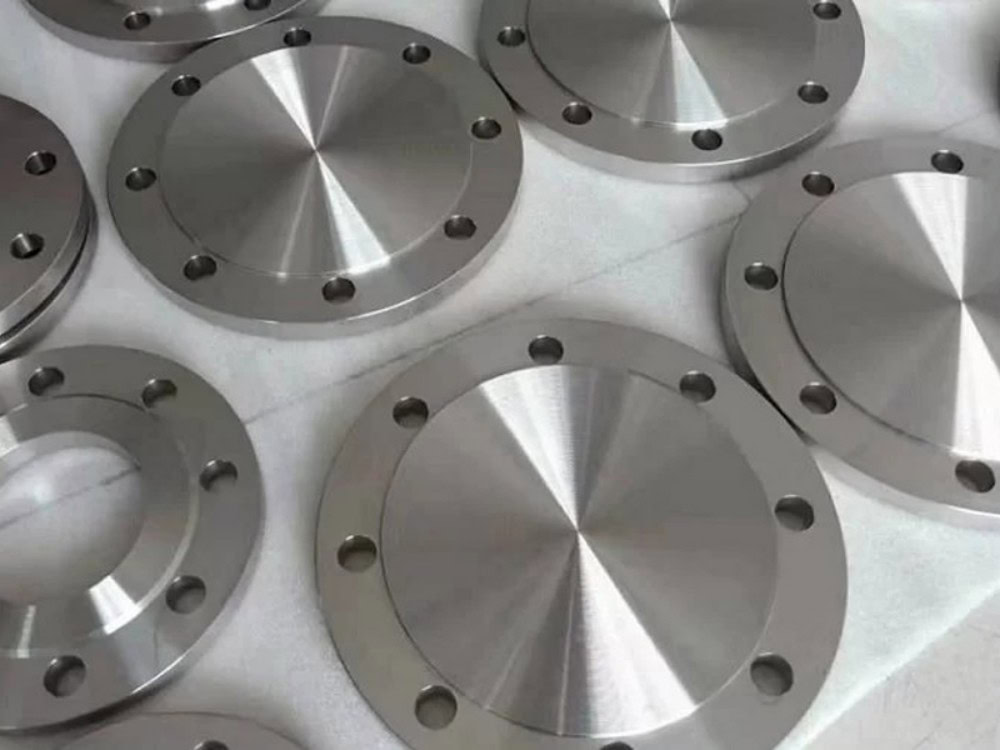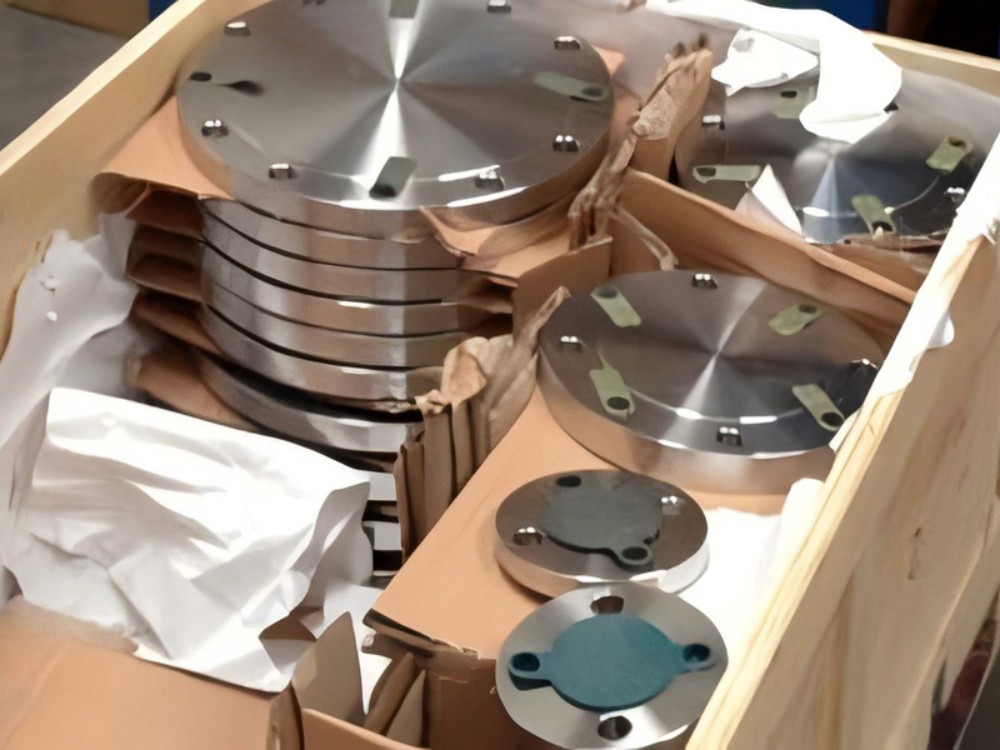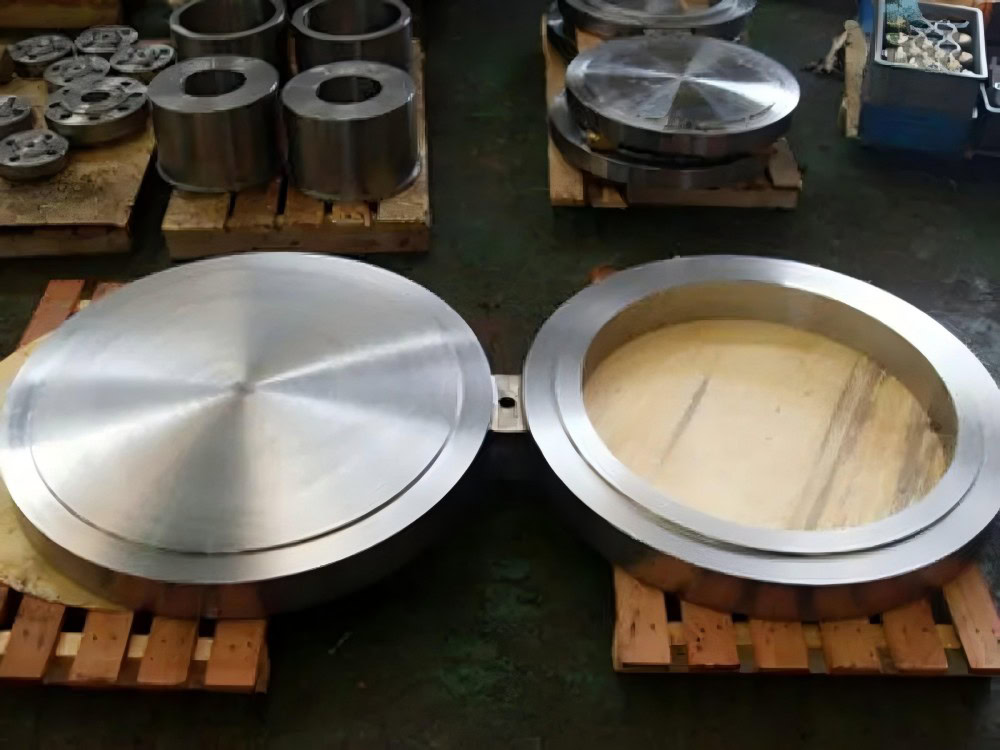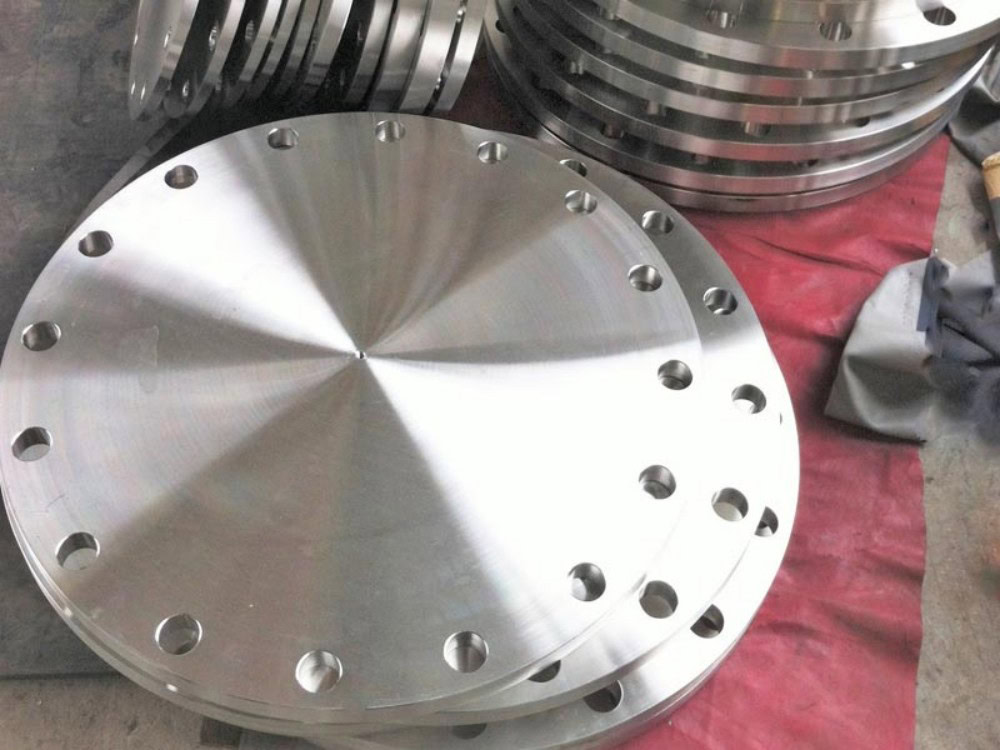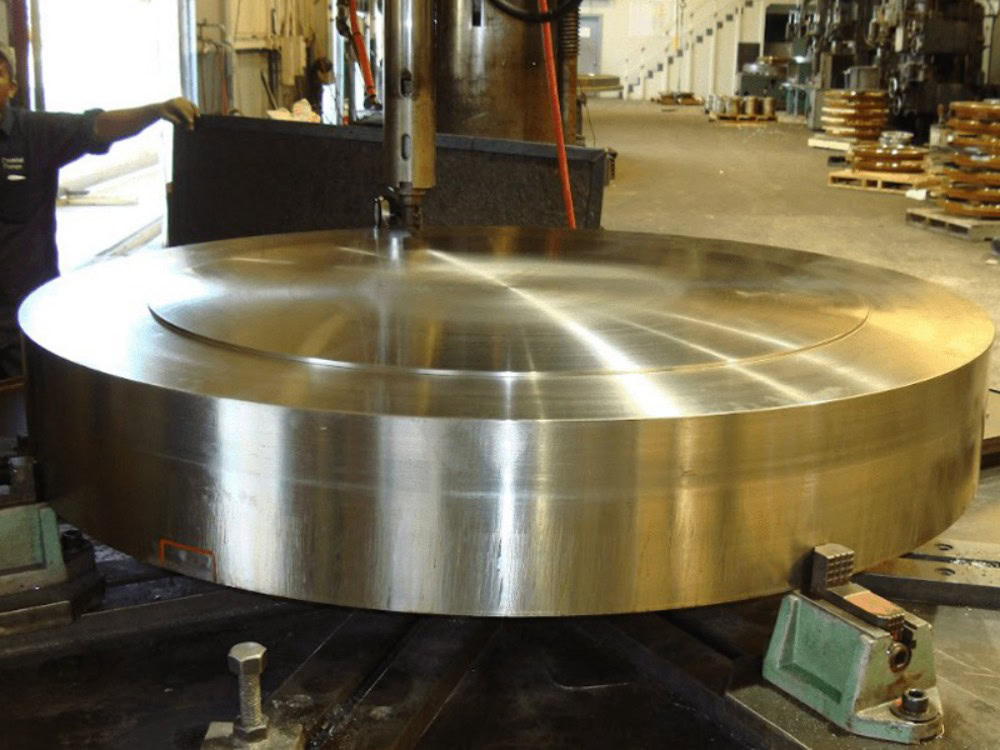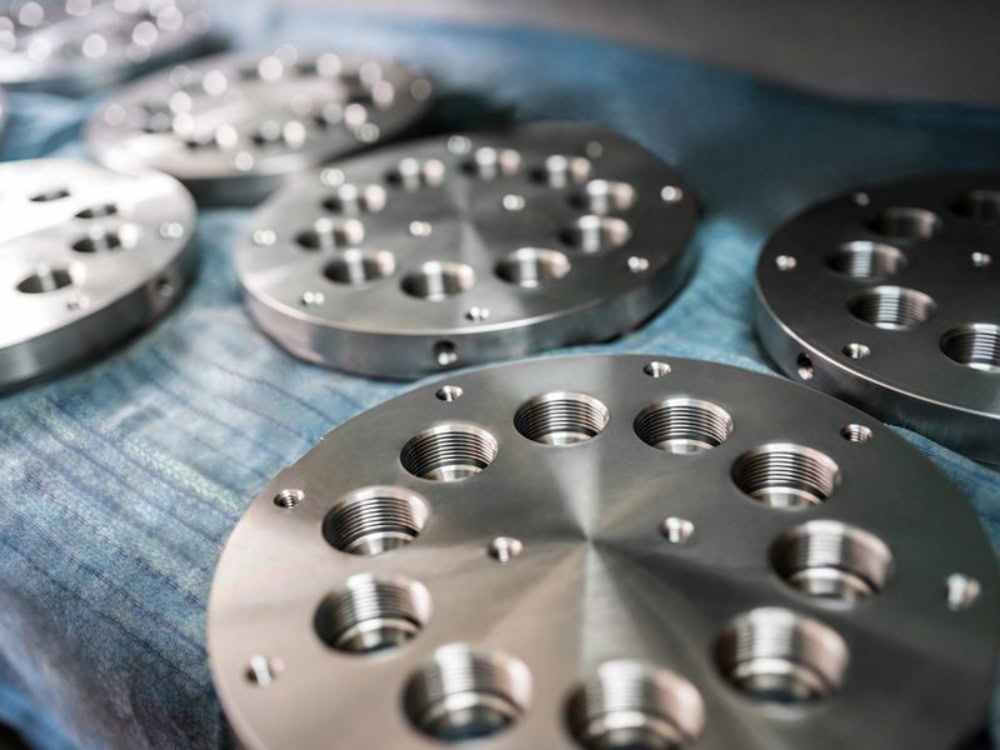Blind Titanium Flange Manufacturer and Supplier
- Flat Face Blind Flanges
- Ring Joint Blind Flanges
- Raised Face Blind Flanges
- Close Nipple Blind Flanges
- Global Delivery
- ISO 9001:2015
- ISO 13485:2016
- 24/7 Technical Support
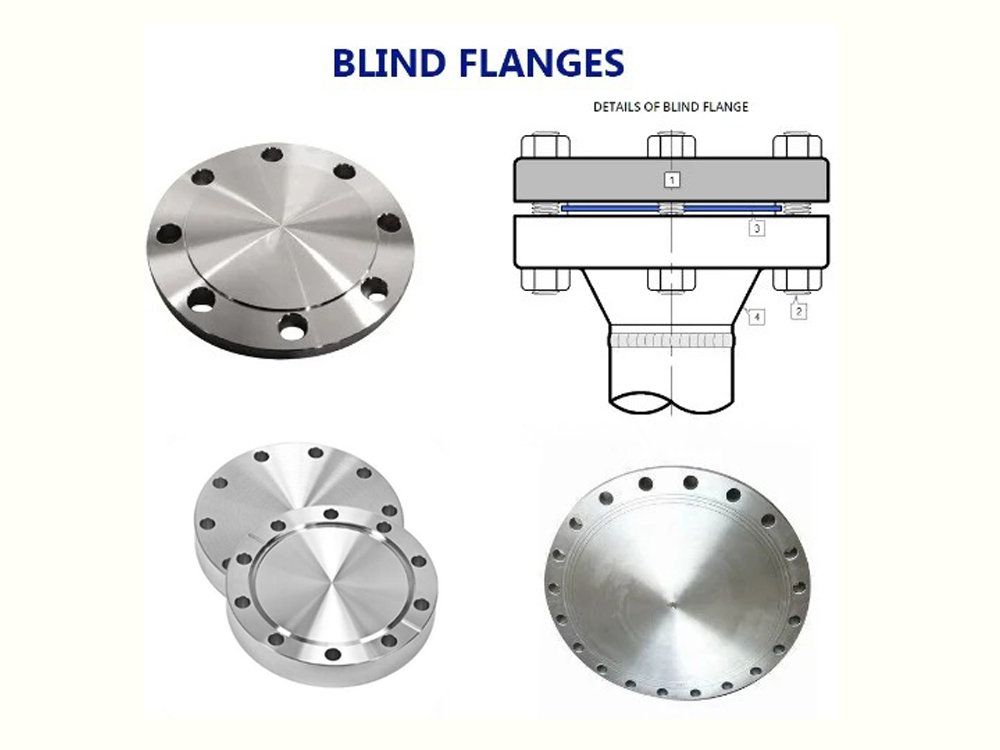
Blind Titanium Flange Factory
As the core infrastructure in the fields of energy transmission, chemical production, aerospace, etc., the safety and reliability of pipeline systems face challenges. Blind titanium flanges are key components in pipeline systems. They are used to seal the ends of pipelines and prevent leakage. They play a vital role in protecting pipeline systems from strong acids, strong alkalis, high temperatures and high pressures. With more than 20 years of experience in manufacturing titanium alloy products, Wstitanium provides global industrial customers with sealing solutions that combine corrosion resistance, high strength and lightweight.
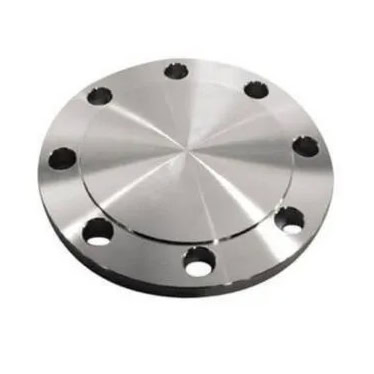
Raised Face Blind Flanges
Raised face blind flanges have a raised ring around the flange face that forms a seal when mated with a female face flange. This design is suitable for high pressure piping due to its increased sealing surface area.
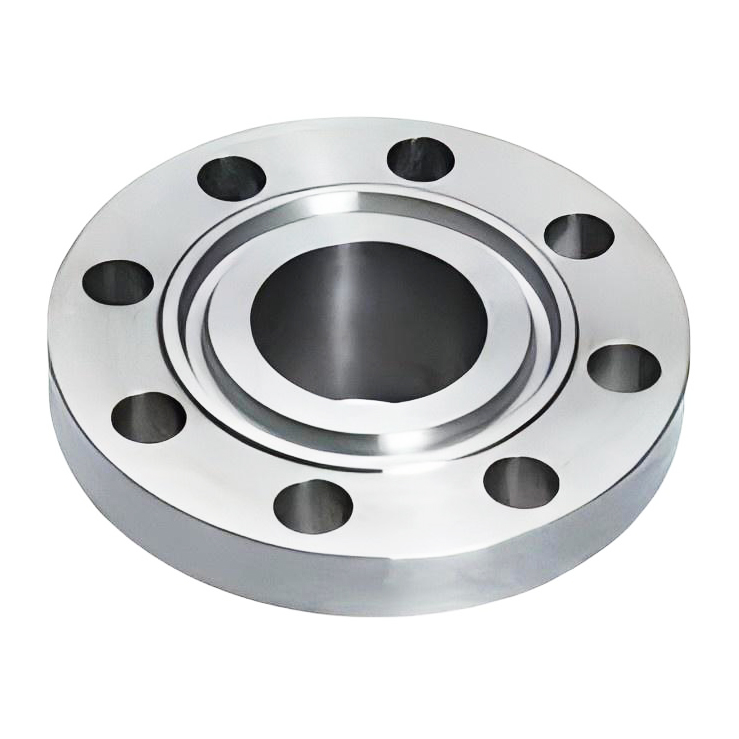
Ring Joint Blind Flanges
Ring joint blind flanges utilize a metal ring gasket to seal the connection. This type of flange is particularly effective in high-pressure and high-temperature applications, as the ring gasket can withstand extreme conditions.

Flat Face Blind Flanges
Flat face blind flanges have a flat face without any raised areas. This design is less common than raised face or ring joint flanges due to its lower sealability. However, flat face flanges are still suitable for low-pressure applications.
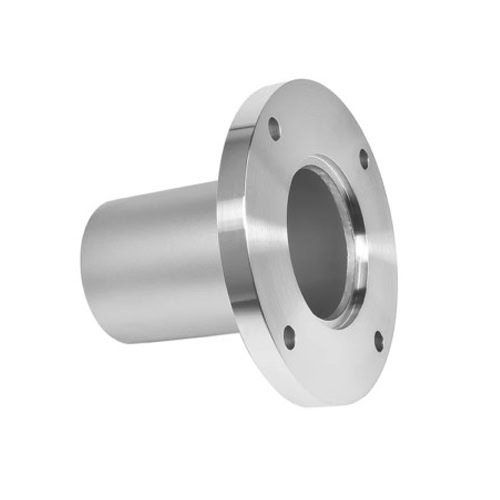
Close Nipple Blind Flanges
Close nipple blind flanges are similar to weld neck flanges, but they have a shorter neck. This design is typically used in tight spaces where a full-length neck would interfere with other components.
Advantages of Titanium Blind Flanges
As the closing element of the pipeline terminal, titanium blind flanges have three core functions:
Dynamic sealing system: Through the precision-machined sealing surface and high-performance gasket, a supercritical seal with a leakage rate of ≤1×10⁻⁶ Pa・m³/s is achieved to ensure zero leakage of the medium.
Structural support system: With an optimized neck design, it can withstand a design pressure of 42MPa and meet the requirements of ASME B16.5 Class 2500.
Adaptability to extreme environments: In the -253℃ liquid hydrogen environment to 550℃ aircraft engine operating conditions, the material performance is kept stable, and the thermal expansion coefficient is only 10.8×10⁻⁶/℃.
Blind flange titanium grade
In chemical pipeline systems, factors such as the corrosiveness of the medium, temperature and pressure conditions, and fluid scouring strength all put forward differentiated requirements for the materials of titanium blind flanges. For example, in the chlor-alkali industry, the presence of strong corrosive media such as concentrated hydrochloric acid and sodium hypochlorite requires titanium blind flanges to have excellent hydrochloric acid corrosion resistance. At this time, Gr2 industrial pure titanium has become a standard option due to its stable performance in a specific concentration of hydrochloric acid environment.
| Performance Index | Gr2 Pure Titanium | 316L Stainless Steel | Performance Improvement Range |
| Density (g/cm³) | 4.5 | 7.9 | 43% weight reduction |
| Tensile Strength (MPa) | 440–590 | 485 | Comparable but with better toughness |
| Resistance to Hydrochloric Acid Corrosion (mm/year) | 25.6 (20% concentration) | Completely dissolved | Corrosion resistance improved 100 times |
| Fatigue Life (cycles) | 1×10⁷ | 5×10⁶ | Extended by 100% |
In the field of marine engineering, complex environments such as humid salt spray and seawater backflow not only test the corrosion resistance of materials, but also challenge their fatigue resistance and stress corrosion resistance. This requires the optimization of titanium grades (such as adding alloy elements to improve organizational stability) to meet comprehensive performance requirements.
| Grade | Material Type | Typical Composition (wt%) | Yield Strength (MPa) | Elongation (%) | Temperature Resistance Range |
| Gr2 | Industrial Pure Titanium | Ti ≥ 99.5 | 240–345 | 25 | -253~300 °C |
| Gr5 | α+β Alloy | Ti-6Al-4V | 895 | 10 | -200~550°C |
| Gr7 | Corrosion-Resistant Alloy | Ti-0.2Pd | 345–485 | 20 | -196~400°C |
| Gr11 | High-Temperature Alloy | Ti-0.3Mo-0.8Ni | 485 | 20 | -150~500°C |
Custom Blind Titanium Flange Gallery
